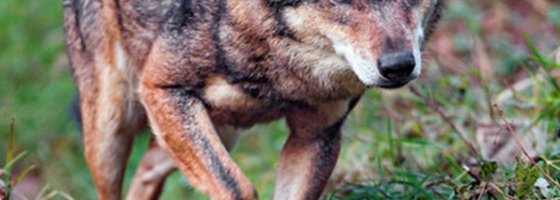Blog post
Goals are important but indicators as well
How to measure something as complex as human-wildlife conflicts

The past two weeks all eyes were on Montreal and the COP15 negotiations that cumulated earlier today in the adoption of a new Kunming-Montreal Global Biodiversity Framework (GBF). The negotiations were aiming to set ambitious yet realistic goals which required rethinking, compromises, and a common commitment from all parties. While the negotiations and some of the specific targets, such as 30x30, generated a lot of attention, another significant aspect was less discussed in the media but is equally important. Once a target is set, how can we actually monitor if we are doing the right things? If new actions are efficient? And if we are changing quickly enough to reach the goals for 2030 or 2050? This is where indicators and scientific monitoring come in to assist the national implementations of the GBF and to track the progress of member parties. For some of the targets, suitable indicators and how to measure them might be quite obvious, but for other targets it will require the development of new monitoring regimes.
![Figure: Percent of residents exhibiting (a) mutualism and (b) domination wildlife values across the 34 countries included in the Global Wildlife Values Survey (GWVS). [Note: Wildlife value dimensions are not mutually exclusive]. Source: GWVS Policy brief 2022 Figure: Percent of residents exhibiting (a) mutualism and (b) domination wildlife values across the 34 countries included in the Global Wildlife Values Survey (GWVS). [Note: Wildlife value dimensions are not mutually exclusive]. Source: GWVS Policy brief 2022](/upload_mm/8/c/a/c03db250-0cd3-46b1-b761-7f2ef9949b36_GoalsAreImportant_chart_670x625_391x375.jpg)
Much of my research focuses on human-wildlife interactions, for example how different parts of society perceive certain species such as large carnivores, but also how governance arrangements can balance the costs and benefits of coexisting with wildlife for relevant stakeholders. These topics are also covered by one of the targets in the new GBF. Target 4 aims to halt human induced extinction of species and raises the ambition to “effectively manage human-wildlife interactions to minimize human-wildlife conflict for coexistence”. This is one of these targets for which indicators might be harder to find. How can you measure something as complex as human-wildlife conflict or coexistence?
Under the lead of Colorado State University, we published previous to COP 15 a policy brief suggesting a potential indicator to be included in the GBF for target 4. We are representing a group of more than 40 researchers that collaborated to make the first global assessment of wildlife value orientations (WVOs).
WVOs connect human values and wildlife management. The theory evolved roughly 30 years ago and has been steadily refined since then. The basic idea is that people will be somewhere on a spectrum between domination and mutualism. A domination orientation places wildlife as subordinate to humans and thus sees it as acceptable to use wildlife as a natural resource but also to limit its negative impacts on humans. A mutualism orientation on the other side places wildlife as part of one’s social community and family which should therefore have equal rights and freedom as humans.
In our global mapping we found quite some variation across countries and cultures (see figure above). Values form early in live, they tend to be stable and they transcend many different aspects in life. In line with this, WVO’s shift only slowly and link to people’s attitudes and behavior in regard to wildlife management and conservation. This is actually the “cool thing” about WVOs - they indicate not only people’s general position on how to treat and live with wildlife, but they also have a quite good predictive power for specific aspects. Meaning that based on a person’s WVO you can assume how they will react to specific management actions such as lethal control or strict conservation.
The final monitoring framework for the Kunming-Montreal global biodiversity framework lists two headline indicators for target 4: the red list index and the proportion of populations within species with an effective population size > 500. Both of these indicators, as well as their suggested component and complementary indicators, focus purely on how populations are doing, but not on the “root of the problem” – meaning the factors that drive human-wildlife conflict and the persecution of certain species.
This is exactly where more social science contributions to conservation will be needed! While our policy brief and efforts did not lead to a direct integration of the WVOs in the GBF monitoring framework, we still want to encourage more countries to start using our survey instrument. Our initial mapping can be seen as baseline data, which also validated that the WVO framework and the survey instrument works across a diverse range of settings. Using WVOs as an indicator for conservation efforts will allow to proactively assess the social sustainability of proposed national management actions for mitigating human-wildlife conflicts, but also to monitor over time if the public shifts towards a more mutualistic idea of coexistence.
If you are interested in more of our global findings or want to read more on target 4 and the benefits of WVOs read our policy brief:
Manfredo, M. J., Teel, T. L., Simmons, B. A., Dressel, S., Glikman, J. A., Roy, S., Smith, D., & Sandström, C. (2022). Social values are crucial for monitoring trends in human-wildlife conflict. Policy Brief 12/2022. Colorado State University.
Main photo at top: This Photo by Unknown Author is licensed under CC BY-ND